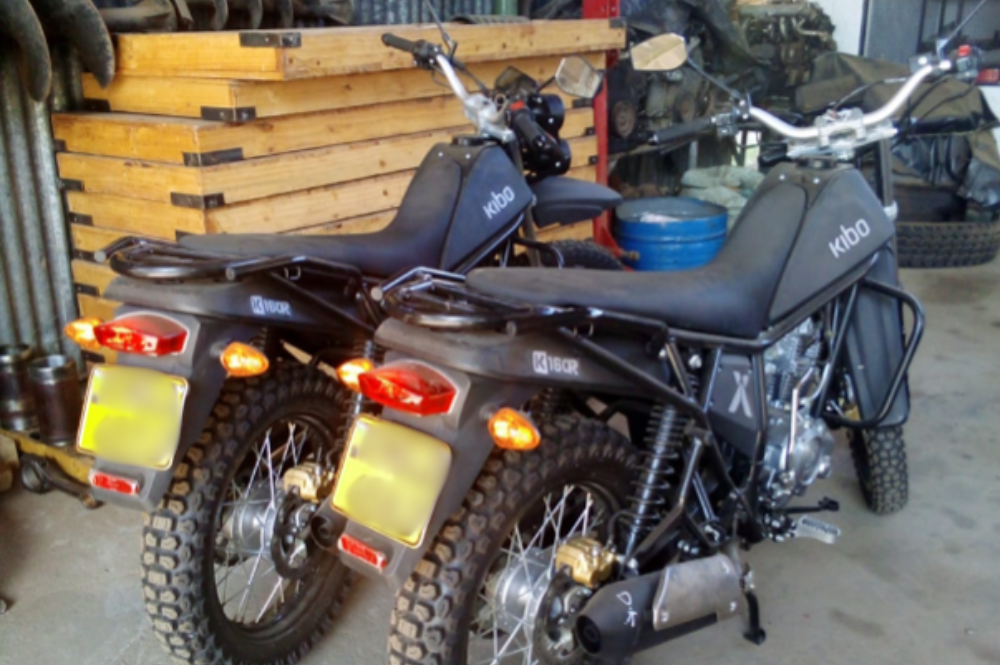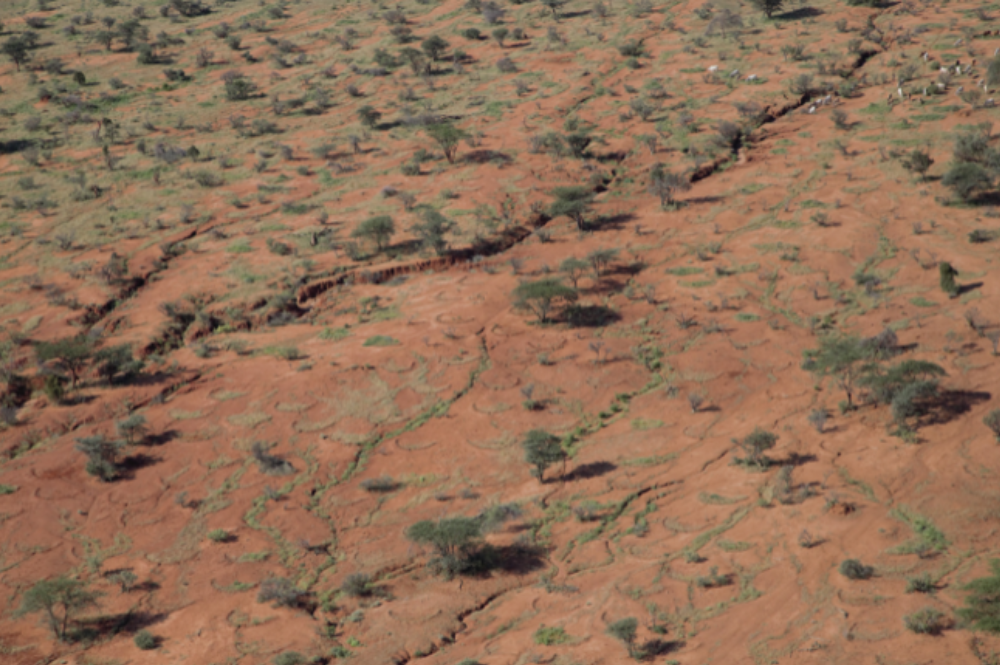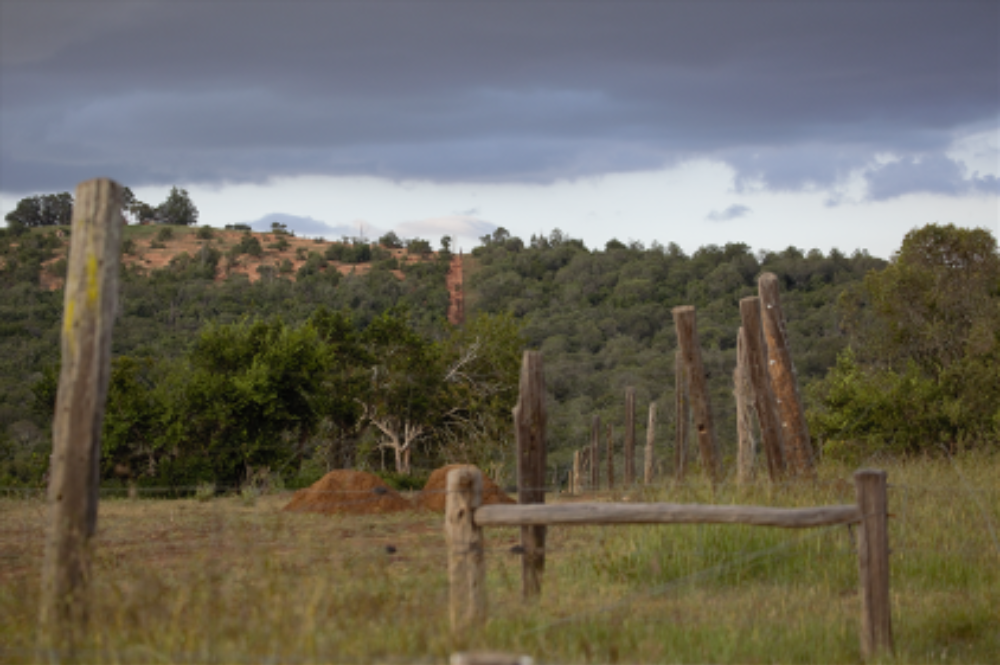In the northern foothills of Mt Kenya, just across the boundary of Borana Conservancy, sits the picturesque Mukogodo landscape. Comprising Kenya’s largest forest reserve, the Mukogodo Forest Reserve (30,189ha) and four surrounding community lands: Il Ngwesi, Maiyanat, Shulumai and Lekurruki, the area is home to an array of biodiversity, including African savannah elephants, lions, leopards, bush pigs and buffalo.
One of the few remaining dry forests in Kenya, the Mukogodo Forest has a natural vegetation cover loss estimated to be more than 380ha per year. Deforestation, the spread of invasive species (such as prickly pear cactus (Opuntia stricta) and lantana (Lantana spp.)), climate change and land degradation caused by overgrazing, are all responsible. The impacts of these issues are clear from above: bare red soils, widening gullies and sparse vegetation across the sloping hillsides are evidence of overgrazing and the subsequent sediment run-off after the rains. But this perspective also shows the extensive restoration work taking place.
Semi-circular configurations dug by hand, known as “bunds”, dot the soils, their shallow trenches capturing rainwater and seeds and allowing for regrowth. The ILMAMUSI Mukogodo Forest Association is a Community Forest Association (CFA) that has been collaborating with several partners to carry out this work. In addition to the bunds, the CFA plants new trees, regenerates and rehabilitates natural springs, and supports other water projects to improve this unique wildlife habitat. Landscape changes aside, the poaching of native species also remains a grave concern for Mukogodo, whilst instability in the region and the proliferation of firearms are constant threats.
With its dense vegetation and cover, the Mukogodo Forest has frequently acted as a hideout for cattle rustlers. After raiding local farms and ranches, they take the stolen livestock into the Forest, where it’s more difficult for rangers and police to locate them before they leave the area, heading into the north.
Thanks to funding from generous donors, we were recently able to help purchase two K160R Kibo bikes, insurance, helmets, as well as other accessories such as reflector jackets and tool kits, for ILMAMUSI. Motorbikes are incredibly useful in the bush and this pair has been no different. Increased patrolling efforts thanks to the two motorcycles have led to improved response times, which, in turn, have reduced incidents of poaching and deforestation activities.
Whilst the Mukogodo Forest itself isn’t home to rhinos, rhinos are living in conservancies throughout the broader landscape. In the future (with improvements to security and the habitat, and in collaboration with the custodians of the land) it’s hoped that rhinos can return. One of the reserves in the landscape is Il Ngwesi, which already has Southern white rhinos and was previously home to Omni, an orphaned black rhino. Tragically, Omni was killed by a poaching gang in 2013.
As we support efforts to boost security and protect the Mukogodo habitat, we hope that rhinos like Omni can once again thrive across the Forest and throughout this landscape. It is only thanks to donors like you that we can work towards this goal. Thank you.










